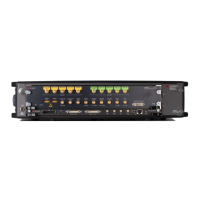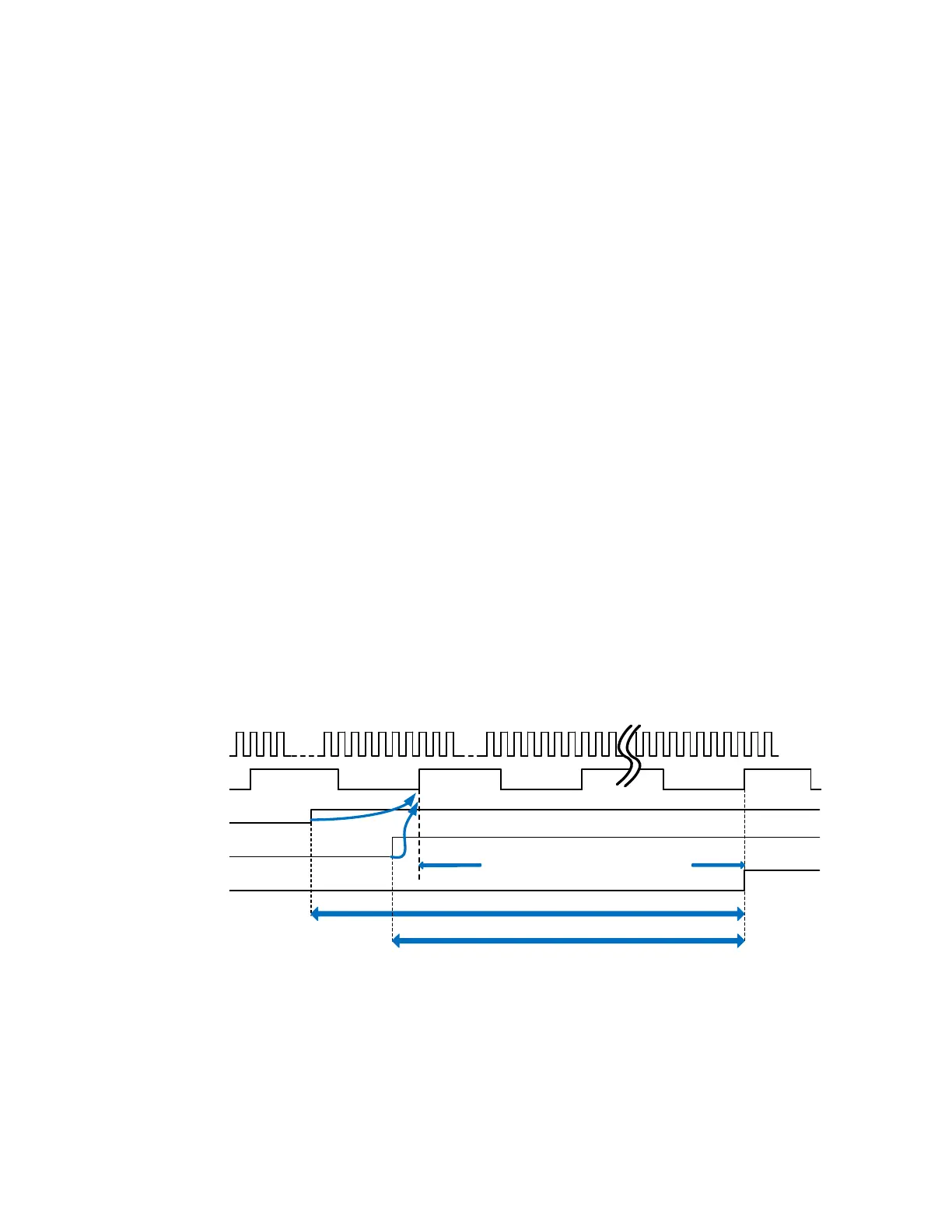Sequencing 3
M8190A User’s Guide 95
3.5.4 Single
After having executed an element once, the sequencer stops and plays the last value of
the element. After having received the next advancement event the process is repeated
until having executed all loops of the current element. Then the execution advances to
the next element.
Sequencer Controls are used to influence the sequencer. So they can control the
waveform generation.
3.6.1 External Inputs
3.6.1.1 TRIGGER/EVENT
The M8190A accepts a wide range of external trigger signal levels to easily adapt to a
measurement setup. The input threshold is user configurable along with the polarity or
whether rising, falling or both edges are to be taken into account. The TRIGGER and
EVENT input signals are clocked internally with the SYNC clock. [SYNC clock = Sample
clock divided by 48 (64) in 14-bit (12-bit) mode or divided by 24*interpolation_factor in
interpolated modes]. To reduce the TRIGGER to DATA out uncertainty the signal applied
to the external input connector needs to meet a setup and hold window. The timing is
specified with respect to the SYNC Clk Out port. See the data sheet for further details.
Trigger is sampled with next rising edge of SYNC Clock
Sample Clock
SYNC Clock
Trigger Case #1
Trigger Case #2
Output
(in both cases)
Trigger latency in Case #1
Trigger latency in Case #2
Internal processing has no uncertanity
Figure 3-3: TRIGGER/EVENT

